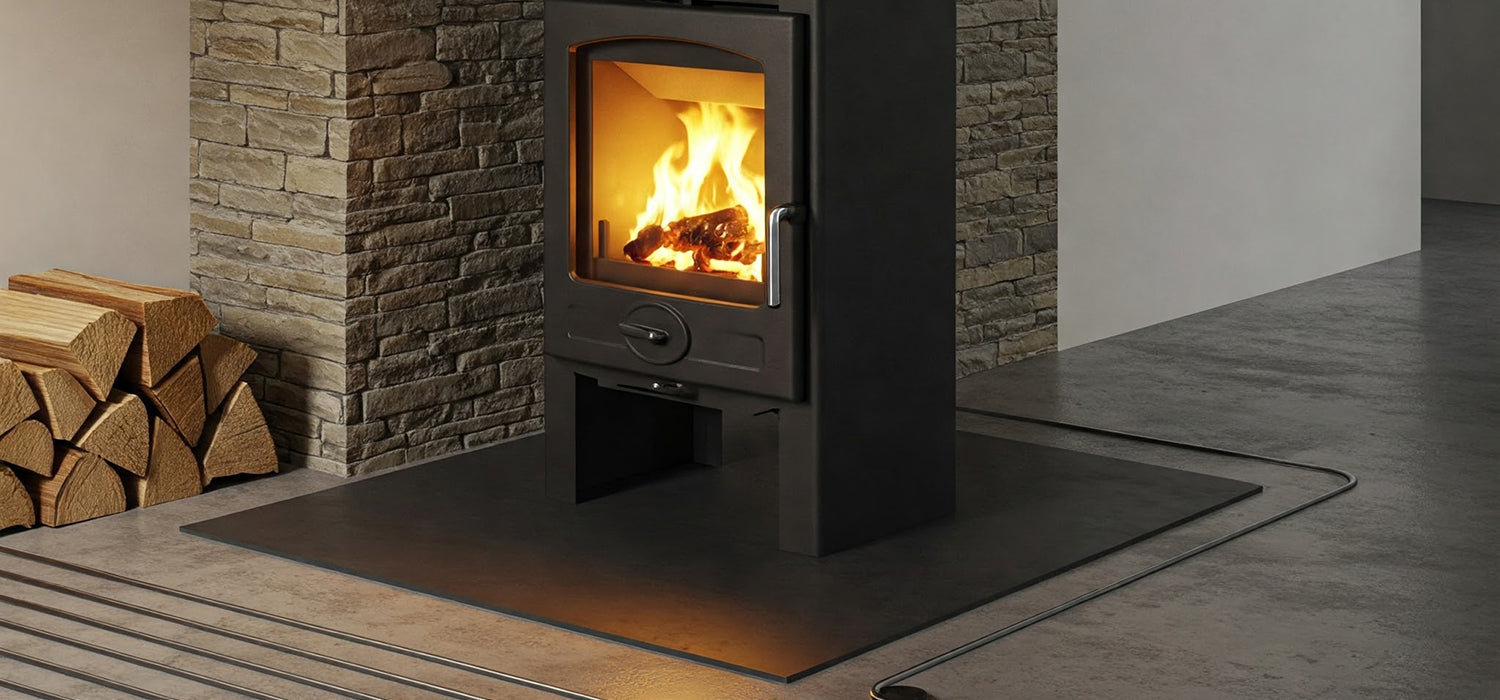
Why Does My Log Burner Smell? Common Causes and Easy Fixes
Ever lit your Log Burner only to wonder if something’s died in the chimney? The short answer: smells usually come from damp wood, poor airflow, or creosote. The good news? Most fixes are simple—keep reading to discover why your cosy fire sometimes stinks and how to stop it.
What’s That Smell? Identifying the Odours from Your Log Burner
There’s nothing quite like curling up beside a log burner on a chilly evening. But what if that inviting glow is accompanied by a whiff of something… less appealing? Suddenly, instead of rustic charm, your home smells like a damp shed or a smoky pub from the 1980s.
The truth is, these odours don’t appear out of nowhere. They’re usually your stove’s way of telling you something needs attention. Once you know how to identify the smell, you can quickly work out what’s behind it.
The Common Causes of a Foul Smell
If your log burner is giving off an odd scent, don’t panic. Most of the time, the reason is simple and can be fixed without too much fuss. Here are the most likely culprits.
Creosote Buildup
Imagine sticky black tar coating the inside of your chimney. That’s creosote. It forms when wood doesn’t burn efficiently and often leaves behind a sharp, bitter smell.
Not only is it unpleasant, but it’s also dangerous. Creosote is highly flammable, and too much of it can trigger a chimney fire. If your stove smells like a mix of burnt plastic and road tar, creosote is the likely villain.
Dust and Debris
Sometimes, the smell has nothing to do with wood at all. Dust loves to collect inside stoves that have been sitting idle, and once you light a fire, it burns off with a musty whiff.
It could also be something as simple as cobwebs, pet hair, or debris that’s fallen down the chimney. A bird’s nest, for example, can cause smoke to back up and bring with it an unmistakeable burning smell.
Dampness and Rust
Stoves left unused for long periods can pick up dampness, especially in older properties where air circulation isn’t great. This moisture creates a rusty, metallic smell that can spread through the room when you light a fire.
Damp wood adds to the problem, producing thick smoke that lingers. If your logs hiss and steam rather than crackle and burn, you’ve found your culprit.
How to Troubleshoot the Odour
The first step is detective work. Ask yourself:
-
Is the wood I’m using properly seasoned? (It should have less than 20% moisture.)
-
When was my chimney last swept? (Experts recommend at least once a year.)
-
Are the door seals tight, or can I feel air escaping?
Often, the fix is straightforward. Swap damp logs for dry hardwood, give the stove a thorough clean, or crack open a window to improve airflow. Many homeowners find the smell disappears once the basics are sorted.
Fixing the Problem and Preventing it from Returning
Solving the smell is one thing. Stopping it from returning is another. With a little care, you can keep your log burner smelling as good as it looks.
The Importance of Regular Cleaning
Think of your log burner like a car: it needs servicing to run properly. A yearly chimney sweep clears out creosote, soot, and any surprise blockages (yes, even bird nests).
Cleaning doesn’t stop at the chimney, though. Ash should be cleared after every few burns, and the firebox wiped down regularly. Gaskets and seals also need checking—if they’re loose, smoky odours can leak into your room.
Neglecting these small tasks allows smells to build up. Stay on top of them, and your stove will stay fresh.
The Role of Proper Wood Storage
Even the most expensive stove will smell bad if you feed it damp logs. Good wood storage is the unsung hero of clean burning.
Logs should be kept off the ground, stacked neatly in a dry, ventilated space, and protected from rain with a roof or cover. If you’re using a log store, leave the sides open for airflow—think “breeze” not “sealed box.”
Hardwoods such as oak, ash, and beech are best. They burn hotter and cleaner than softwoods, leaving less residue and fewer smells. If your wood is spitting or producing more smoke than flame, it’s too wet and needs more time to season.
When to Call a Professional
Sometimes, no amount of DIY tinkering will shift the smell. That’s when it’s time to bring in a professional.
Call an expert if:
-
The odour lingers even with dry wood and good ventilation
-
You notice smoke escaping into your living space
-
There are visible cracks or damage to the stove or chimney
-
The smell has a strong chemical or burning plastic note
A chimney sweep or stove specialist can spot problems hidden from view, such as damaged flue liners or advanced creosote deposits. They’ll not only remove the smell but also make sure your home is safe from fire hazards.
Final Thoughts
A smelly log burner can take the shine off an otherwise cosy evening, but the fix is rarely complicated. Most issues come down to damp wood, poor airflow, or a build-up of creosote. Once you understand the cause, you’re already halfway to solving it.
Regular cleaning, proper wood storage, and paying attention to how your stove burns will keep your home smelling fresh. And if the smell refuses to budge, don’t hesitate to call a professional—it’s better to be safe than sorry.
With the right care, your log burner will give you warmth, comfort, and that irresistible woody aroma, without the unwanted side of smoky or musty smells. After all, a fire should smell like a fire… not like damp socks.
Other content we think you'll love
- What Are the New Log Burner Rules in the UK?
- Why Your Log Burner is Smoking: Causes, Fixes, and Safety Tips
- Why Your Log Burner Is Burning Too Fast (And How to Fix It)
- Why Does My Log Burner Keep Smoking? Common Causes & Fixes
- Why Your Log Burner Won’t Stay Lit (and How to Fix It)
- Why Is My Log Burner Smoking? Causes, Fixes & Prevention
- Can You Safely Put a TV Above a Log Burner?
- Keeping Your Baby Safe Around Log Burners
- Can You Safely Install a Log Burner Near Glass?
- Why Your Fireplace Smells Like Burning Plastic (and What to Do About It)
- Log Burner Carbon Monoxide: Stay Safe from the Silent Killer
- Log Burner Law UK: The Complete Guide for Homeowners

